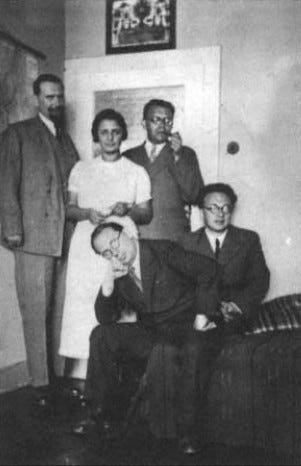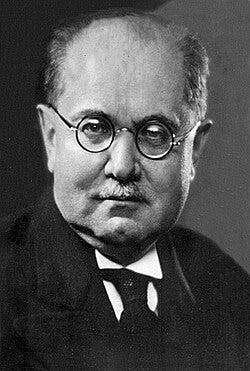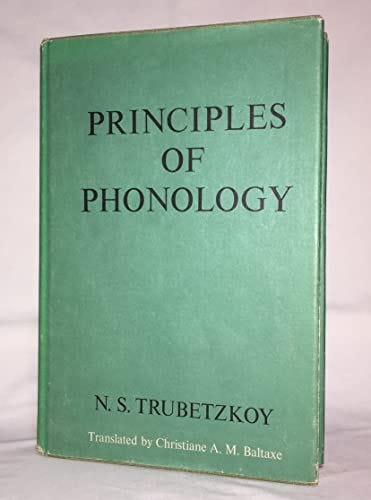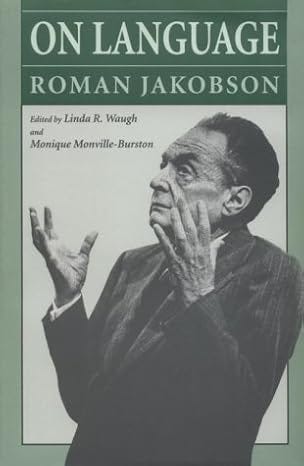The Prague School of Linguistics: How a Circle of Scholars Reshaped Modern Linguistic Thought.
Structure, Function, and Legacy

The Prague School of Linguistics refers to a group of scholars active primarily in the 1920s and 1930s, centred around the Czech capital. While often presented as a “school”, it was more accurately a circle of linguists sharing theoretical commitments and methods. Their influence on linguistics, especially phonology, syntax, stylistics, and sociolinguistics, has been wide-reaching and enduring.
Historical Background
The Prague Linguistic Circle was formally established in 1926 by Vilém Mathesius, though many of its ideas predated this date. Key figures included Roman Jakobson, Nikolai Trubetzkoy, Bohuslav Havránek, and Jan Mukařovský. It was a notably international group, with Russian émigrés (such as Jakobson and Trubetzkoy) bringing ideas from Moscow and St Petersburg, blending these with Czech linguistic traditions.
This convergence of linguistic traditions produced a rich theoretical framework often labelled as functional structuralism. The term distinguishes it from Saussurean structuralism, which focused on the synchronic system of language but paid less attention to the function of its components in communication.
Core Theoretical Commitments
At the heart of the Prague School’s thought was the idea that language is a structured system with functional differentiation. Each element in the system plays a communicative role. Three principles underlie their work:
Functionalism:
Language is not a closed system of arbitrary signs. Every unit (phoneme, morpheme, sentence) serves a communicative function. The Prague School asked not only how language is structured but why it is structured as it is.Structural Opposition:
Especially in phonology, they emphasised the role of distinctive features. Trubetzkoy’s Principles of Phonology (1939) formalised the idea that phonemes are defined by their opposition to one another. This went beyond simply listing sounds; it involved examining how contrast between sounds supports meaning differentiation.Markedness:
It is a central idea developed by Trubetzkoy and Jakobson. It proposes that in many binary oppositions (e.g. voiced vs voiceless, singular vs plural), one term is ‘unmarked’ (neutral or default), while the other is ‘marked’ (specialised or restricted). This concept would later influence many areas of linguistics, including generative grammar.
Contributions to Phonology
The Prague School’s greatest influence was arguably in phonology. Moving beyond Saussure’s idea of linguistic signs, Trubetzkoy and Jakobson focused on the phoneme as a bundle of oppositional features. For example, the difference between /p/ and /b/ in English is voicedness; this opposition is what matters, not the physical sound alone.
Their concept of distinctive features laid the groundwork for later developments in phonological theory, including the generative phonology of Chomsky and Halle (1968). Jakobson’s work on universals of sound systems also anticipated typological studies in later decades.
Syntax and the Functional Sentence Perspective
Vilém Mathesius introduced the concept of functional sentence perspective (FSP), later elaborated by scholars such as Jan Firbas. FSP analyses sentence structure not just in terms of grammar but in terms of theme and rheme1, the given information and the new or focal point of the message.
For example:
“John opened the window.” (neutral order)
“It was the window that John opened.” (focus on 'window')
This approach put the focus on how word order and intonation can shift communicative emphasis, even when the grammatical structure remains stable. It directly influenced work in discourse analysis and information structure.
Stylistics and Literature
The Prague School was also interested in how language functions in literature. Mukařovský, in particular, worked on the idea of foregrounding, a process by which literary language deviates from the norms of ordinary communication to draw attention to itself.

Foregrounding can be seen in Emily Dickinson’s poetry, where she frequently used dashes, unconventional capitalization, and abrupt syntax to draw attention to specific words and themes, making her poetry feel more intense and thought-provoking.
In this view, poetic or artistic language is not merely decorative but functionally distinct, creating meaning through deviation and defamiliarisation. This idea fed into stylistics, semiotics, and literary theory, particularly in Eastern Europe and Russia.
Sociolinguistic Perspectives
While not sociolinguists in the modern sense, Prague School scholars took language variation seriously. They distinguished between standard and non-standard varieties, between poetic and everyday language, and between different registers and styles.
Bohuslav Havránek, explored how different functional styles of language develop for specific purposes (scientific writing, journalism, legal language) each with its own norms and constraints.
This attention to function in context prefigured many concerns of later sociolinguistics, pragmatics, and discourse studies.
Influence, Legacy, and Critique
The Prague School’s theoretical legacy is visible across linguistics, literary studies, and communication theory. Through Jakobson’s later work in the United States, its ideas fed into the development of generative phonology, stylistics, semiotics, and discourse analysis. Concepts such as distinctive features, markedness, functional styles, and foregrounding have become standard tools for analysing how language works.
Its influence also reached into translation studies, where Functional Sentence Perspective (FSP) continues to shape thinking on information structure and word order. In literary theory, Mukařovský’s work on poetic language anticipated later debates on defamiliarisation, estrangement, and textual autonomy. And in sociolinguistics, Havránek’s concern for language variation by register and context prefigured later attention to communicative norms and genre.
However, these achievements have also come under critical scrutiny. The Prague School’s functionalism, although a valuable corrective to abstract formalism, sometimes overreached. The assumption that every element of language serves a communicative function risks becoming circular, as analysts project function onto features after the fact. Real language use often shows redundancy, ambiguity, and error that resist neat explanation in functional terms.
Another limitation lies in its methodological orientation. Much of the School’s work relied on introspective analysis of literary or idealised language, with limited empirical grounding. Later fields, particularly corpus linguistics and psycholinguistics, exposed the need for broader and more systematic data. Theoretical claims about universals and oppositions have not always held up under cross-linguistic or experimental scrutiny.
There were also cultural and ideological constraints. Despite interest in variation, the Prague School remained rooted in a European intellectual tradition, often treating literary and standard language as ideal models. It did not fully anticipate the implications of sociolinguistic relativism or the role of power and ideology in language use, concerns that later emerged in critical linguistics.
Most significantly, the School offered only a partial account of pragmatics. While it acknowledged context and function, it did not develop formal models of meaning in interaction. Concepts such as implicature, speech acts, and contextual relevance were developed later by Grice, Austin, and Sperber & Wilson, among others.
Nonetheless, the Prague School’s influence persists. Many of its ideas were absorbed into later frameworks, not as dogma, but as foundational insights. Functional approaches to language remain influential in Systemic Functional Linguistics (Halliday), cognitive linguistics, and discourse studies. The School's insistence on structure and use, form and meaning, still resonates with contemporary attempts to bridge formal, social, and cultural models of language.
In that sense, the Prague School did not fail; it evolved. It gave us a vocabulary and orientation still valuable today, particularly in areas where linguistics crosses into philosophy, literature, and cultural analysis.
©Antoine Decressac — 2025.
Further Reading
Trubetzkoy, N. S. (1939). Principles of Phonology (translated 1969). University of California Press.
Jakobson, R. (1960). "Closing Statement: Linguistics and Poetics." In Style in Language, edited by T. Sebeok. MIT Press.
Firbas, J. (1992). Functional Sentence Perspective in Written and Spoken Communication. Cambridge University Press.
Mukařovský, J. (1964). Aesthetic Function, Norm and Value as Social Facts. Michigan Slavic Publications.
Dresher, B. E. (2009). The Contrastive Hierarchy in Phonology. Cambridge University Press.
In linguistics, theme and rheme are concepts used to analyse sentence structure and information flow.
Theme: The starting point of a sentence, setting the context. It often includes familiar or given information. For example, in "The cat sat on the mat," "The cat" is the theme.
Rheme: The part of the sentence that provides new or important information about the theme. In the same example, "sat on the mat" is the rheme.
Together, theme and rheme help structure sentences in a way that makes communication clear and coherent








A nice overview of the Prague School and its influence on Western linguistic theory. I am very much interested in the historical roots of the three schools of phonology that grew out of Baudouin de Courtenay's phonemic theory--Prague, Leningrad, and Moscow. Trubetzkoy and Jakobson were originally influenced by the Moscow school's approach to language as a formal system, but Baudouin was a prominent figure in the rival St. Petersburg school. So they were discouraged from studying his work.
Trubetzkoy and Jakobson made a distinction between physiophonetic and psychophonetic alternations that were relabeled 'phonological' and 'morphonological' alternations, respectively. They were attempting to reinterpret his alternational dichotomy in terms of structuralist theory, but Baudouin's approach was fundamentally psychological rather than sociological. Structuralism tends to be more about language as a social system rather than language as a psychological system. Anyway, much of their approach to phonology can be traced back to Baudouin's psychological theory of phonetic alternations, perhaps even the roots of generative markedness theory that grew out of Jakobson's work.
Trubetzkoy rejected Baudouin's psychological definition of the phoneme as the "psychological equivalent of a speech sound" on the grounds that it was circular. I think his criticism was reasonable but that he misunderstood Baudouin's somewhat complicated attempts to pin down the psychological nature of speech sounds. That is, he thought of speech sounds themselves as psychological objects--blends of auditory and articulatory properties that were a prelude to the concept of phonetic features in the Prague School. Phonemes are special types of speech sounds--ones that had a semiotic function, or role in memorizing words and morphemes. In that sense, they are equivalent to ordinary speech sounds, but specialized to a language system in the mind of a speaker. Therefore, I think that Trubetzkoy was hasty in rejecting Baudouin's psychologism.
Thank you